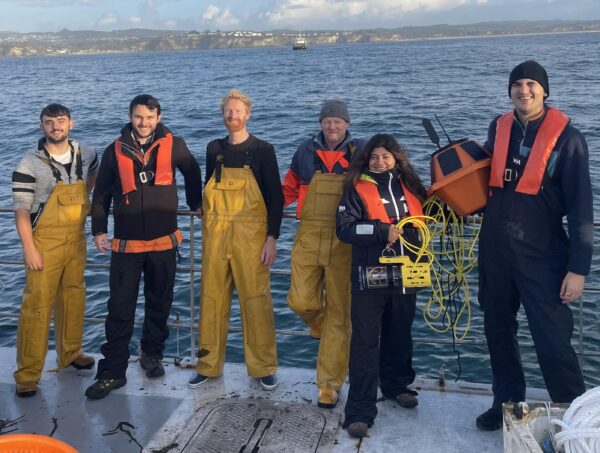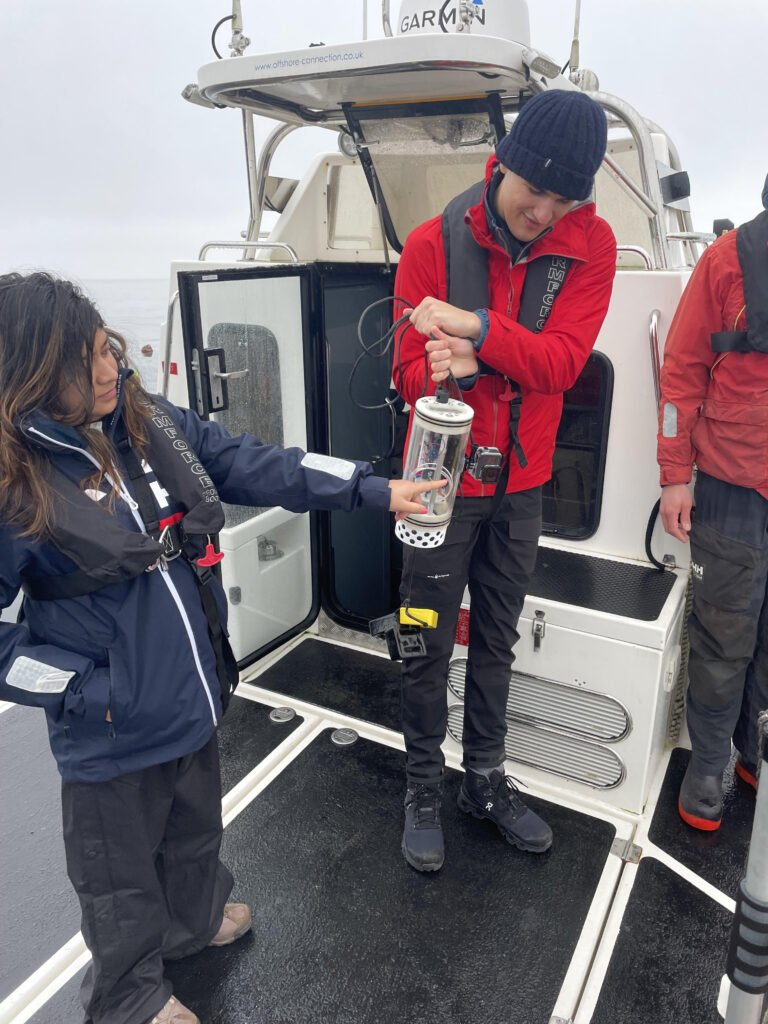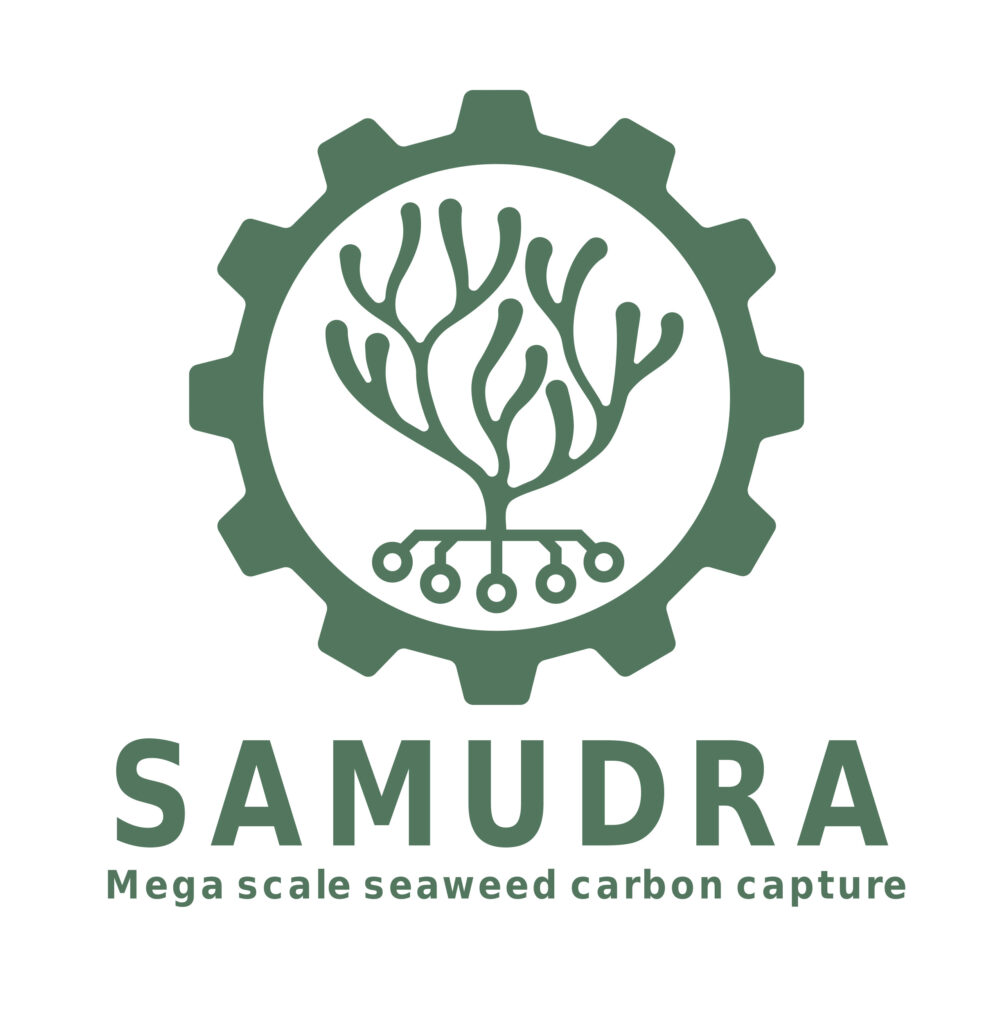 Back
Back
How robots are scaling seaweed production to maximise carbon capture
Samudra Oceans showcased its robots that scale seaweed growth and maximise carbon capture at 🔥THE HEAT.

BY JOE ROWAN, July 5 2024
THE HEAT, VOYAGERS.io’s first-ever climate-tech festival, took place on Friday September 20 2024 at the extraordinary Harwell Science and Innovation Campus in Oxfordshire.
THE HEAT is a hands-on, practical, mind-expanding, friendship-building, exploratory, curiosity-led, science-based, creative, artistic, participatory, decentralised, experimental, edgy, live, risky, urgent and unpredictable gathering of the talented people working on climate technologies. THE HEAT is not a conference. Don’t expect dull panels or awful coffee. Instead, come to make new friends, experience science in action, learn and share your knowledge, inspire and be inspired. Bring your most engaged and curious festival mindset.
Samudra Oceans showcased its robots that scale seaweed growth and maximise carbon capture at 🔥THE HEAT.
🧠 Learn more about Samudra Oceans in our article below and at SamudraOceans.com
Can seaweed save us? Only if robots let us farm it at enough scale to capture gigatonnes of carbon. That’s the goal of Samudra Oceans, which is harnessing the power of seaweed to capture carbon at scale using robotics and AI. The London-based startup makes robots to automate the monitoring of ocean seaweed farms, making them more productive and efficient.
“My co-founder and I are both engineers and we wanted to find the most scalable way to solve the climate crisis,” CEO Joyeeta Das explains. Seaweed is highly effective at sequestering carbon: “It captures carbon six to 50 times more than even tropical forests of equivalent area, so it is a highly scalable solution.” And yet not enough is being grown naturally.
Das co-founded the startup with Alexander Facey with one goal in mind: to remove a gigatonne of carbon from the atmosphere by 2033 by scaling seaweed farming using robotics and AI. Their Sonde robot, less than a metre long and half a metre wide, sits near the water surface at the same level as the seaweed, and collects water-quality data. It then transmits this information via a device called the Umbilical to a smart buoy, which then shares data over 3G or satellite links so that ocean farmers know exactly how their farms are doing. “What that means is, you’re not on a boat at 4am with five people, spending thousands of pounds every week trying to see if your farm’s OK.”

Das previously worked in AI, founded a data-analytics startup, and launched an online ecosystem, SuperPitch, to connect founders with investors. Facey had been a design engineer at an air-filtration company, and had founded a startup, Shoal Technologies.
Das’s childhood guided her towards seaweed farming. “My mother, a conservation botanist, has been collecting and sampling seaweed from the time I was born. I’ve grown up with samples in my house and scientific names at the breakfast table, and discussions of what’s happening to the climate crisis.”
Current seaweed farming methods are inefficient and antiquated. “Right now, seaweed farming is pretty much done as it was 250 years ago, using ropes. You wouldn’t design a seaweed farm like that today – you’d look at the latest tech, at offshore wind and energy, at automatic naval vessels. You’d take all this stuff to make a farm in the sea.”
The 10-strong company raised a £800k pre-Seed from Carbon13, the British Design Fund and Britbots. Das was surprised by the level of early partner interest. “I thought, because it’s hardware and climate, that it would grow really slowly. Yet we’re not even two years old and we have sites in England, Scotland and Jamaica, with pilots in Mexico and Peru coming up.”
Next year the company intends to launch containerised “smart farms”, which arrive flat-packed and can be installed on site. Seeding and harvesting will take place on land; the unit is then towed to the growing site for growing.
“For me, it all boils down to the impact. Have we created 10,000 jobs in tier-three coastal towns in ten years? Have we taken out one gigatonne of carbon? And most importantly, are the people who work with us insanely happy?”
And, of course, making it easier and far more scalable to grow food in the ocean. “That will unlock capacity at an industrial scale. And hopefully this is not just a mitigation strategy for the climate crisis, but also an adaptation strategy.”
Samudra Oceans showcased their monitoring robot, the Sonde, at THE HEAT.

Learn more about Samudra Oceans at SamudraOceans.com